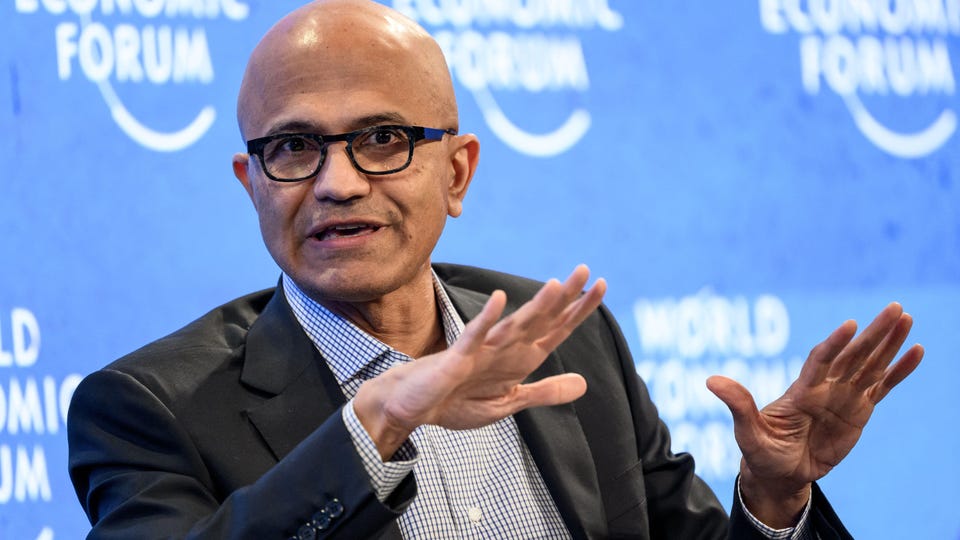Satya Nadella’s Simple Framework For Clear, Concise Communication


Microsoft CEO Satya Nadella at the World Economic Forum in Davos on May 24, 2022. (Photo by Fabrice … [+] COFFRINI / AFP) (Photo by FABRICE COFFRINI/AFP via Getty Images)
AFP via Getty Images
Microsoft CEO Satya Nadella believes that the number one trait today’s leaders must possess is an attribute that’s often underestimated—the ability to see and communicate clearly in times of turbulence.
“Your ability to come into an uncertain time and an uncertain future and bring about clarity is key,” Nadella says.
“Clarity” is a fuzzy word. While its meaning is easy to understand, it’s not easy to achieve. So how, exactly, can leaders “bring clarity” in uncertain times?
One way to achieve clarity is to make sure everything you communicate is concise and simple. A prime example is Nadella’s recent company-wide email announcing the elimination of 10,000 jobs.
Clear communication is concise.
Nadella’s memo to employees contained just 626 words. Nadella writes almost entirely in the active voice, where the subject of the sentence performs the action. The result is that Nadella answers many questions in a small amount of space.
“A few things are clear,” Nadella writes in the email’s first sentence. He explains that:
Customers are doing more with less. Organizations worldwide are exercising caution. Artificial intelligence is sparking the next wave in computer technology.
Nadella writes, “Microsoft will emerge from this stronger and more competitive, but it requires us to take actions grounded in three priorities.”
By highlighting “three priorities,” Nadella shows that he understands a fundamental building block of clear communication—the rule of three.
Clear communication follows the rule of three.
The rule of three is well-established in the neuroscience literature on communication. It means that readers or listeners find it easier to absorb and recall three items in working memory. A list containing too many items (over seven) only adds confusion to an already messy situation.
Nadella’s three priorities are short, clear, and to the point.
First, we will align our cost structure with our revenue and where we see customer demand. Today, we are making changes that will result in the reduction of our overall workforce by 10,000 jobs through the end of FY23 Q3. [Nadella doesn’t make readers wait to learn the headline news. He brings it up front].
Second, we will continue to invest in strategic areas for our future, meaning we are allocating both our capital and talent to areas of secular growth and long-term competitiveness for the company, while divesting in other areas. [Nadella also announces the $1.2 billion charge Microsoft will take to cover severance payments].
And third, we will treat our people with dignity and respect, and act transparently. [Nadella details the “above market” severance and benefits Microsoft is committing to affected workers].
I ran Nadella’s email through a software tool to measure writing quality. Although the memo received high marks for clarity, the tool called Nadella’s writing “a bit bland.”
In this case, bland is good.
As a communication specialist, I enjoy writing about transformative speeches, grand stage performances, and famous TED Talks. But in today’s workplace, the majority of business communication is simply meant to provide straight-forward, actionable information. In these cases, leaders who make clarity a top priority will earn the respect of their teams and stakeholders.
